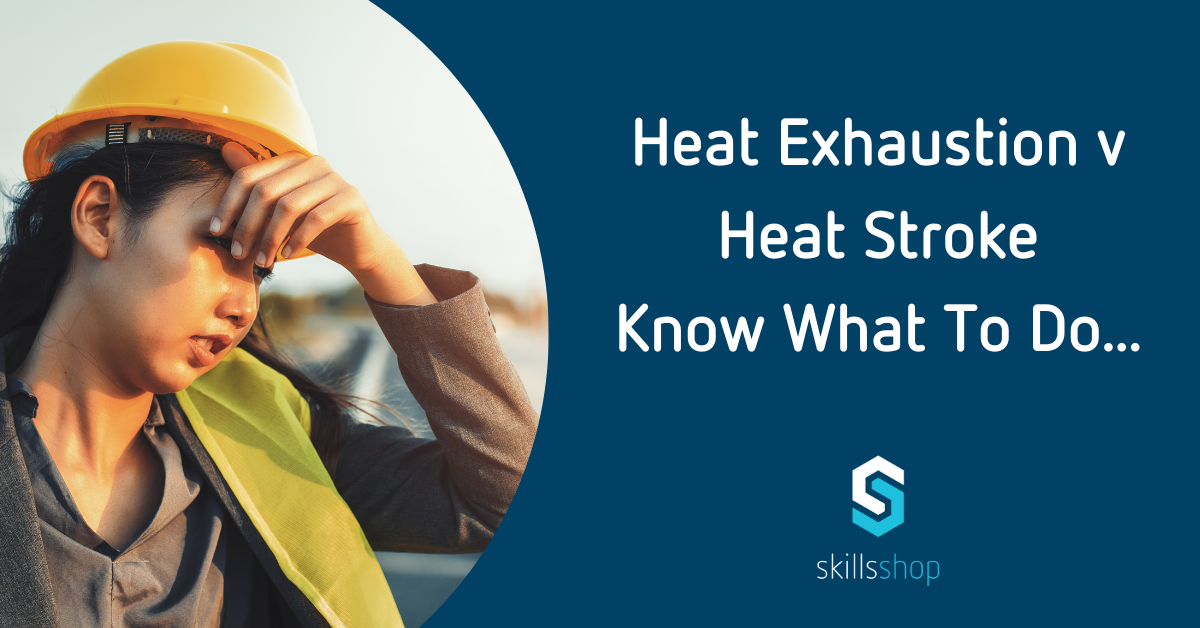Summer is here, and with it comes scorching temperatures that can pose serious risks to our health. Whether you’re spending time outdoors, engaging in physical activities, or working in a hot environment, it’s crucial to be aware of the dangers of heat-related illnesses.
In this blog, I’m going to answer typical questions I get asked when delivering first aid at work courses to help you differentiate between two common heat-related conditions: heat exhaustion and heat stroke.
So, grab a cool drink, find a comfortable spot, and let’s dive in 💦
Participant 1: I’ve been hearing a lot about heat exhaustion and heat stroke lately. Are they the same thing?
Me: Great question! While both conditions are related to excessive heat exposure, they are different in terms of severity and symptoms. Heat exhaustion is usually the precursor to heat stroke. It occurs when your body overheats but can still regulate its internal temperature, whereas heat stroke is a severe medical emergency requiring immediate attention.
Participant 1: Oh, I see. So, what are the signs and symptoms of heat exhaustion?
Me: Heat exhaustion manifests with various symptoms, including profuse sweating, fatigue, dizziness, headache, nausea, muscle cramps, and a rapid heartbeat. You may also feel lightheaded or experience a mild fever. It’s important to note that heat exhaustion can progress quickly if not addressed promptly.
Participant 1: That’s good to know! So, what should I do if I suspect heat exhaustion?
Me: If you suspect heat exhaustion, it’s crucial to take immediate action. Find a cool, shaded area and rest. Drink plenty of fluids (preferably water or electrolyte-rich beverages) to rehydrate. Loosen any tight clothing and apply cool, damp towels or take a refreshing shower to help cool down the body. If the symptoms worsen or don’t improve within 30 minutes, seek medical assistance.
Participant 1: You said heat stroke is more severe. What should I be looking out for?
Me: Heat stroke is characterised by a higher body temperature (usually above 104°F or 40°C), a complete absence of sweating, confusion, disorientation, seizures, and even loss of consciousness. Heat stroke is a medical emergency that requires immediate medical attention.
Call emergency services immediately and move the person to a cooler environment.
While waiting for help to arrive, try to lower their body temperature by applying cold water to their skin or placing ice packs on their neck, armpits, and groin area.
Do not give them anything to drink, as they may be unconscious and at risk of choking. Or if conscious, they could go into shock.
Participant 1: That’s crucial information to remember. So, how can we prevent these heat-related illnesses?
Me: Prevention is key! Here are some tips:
- Stay hydrated by drinking plenty of fluids throughout the day, even if you don’t feel thirsty.
- Avoid being outside during the hottest hours of the day and take regular breaks in shaded or air-conditioned areas.
- Wear loose, light-coloured clothing and protect yourself with a wide-brimmed hat and sunscreen.
- And, never leave children, pets, or vulnerable individuals in hot cars.
- Remember that certain individuals are more vulnerable to heat-related illnesses, such as older adults, children, those with chronic illnesses, and people working in high-temperature environments. Keep a close eye on them and check in regularly to ensure their well-being.
Stay cool, stay safe, and enjoy the summer while taking care of your health!
Summary:
Understanding the distinctions between heat exhaustion and heat stroke is crucial in safeguarding ourselves and others during hot weather conditions. By recognising the signs, taking preventive measures, and acting promptly in case of an emergency, we can beat the heat and ensure a safe and enjoyable summer for everyone.
To find out more and learn other life saving skills, check out the links below:





